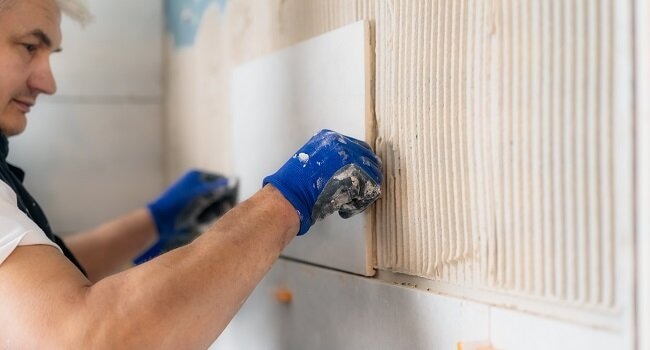Bathroom renovations are a significant investment in your home’s comfort and value. Careful planning is essential to ensure the success of your project and to avoid unnecessary expenses or delays. This guide outlines the essential first steps to take when renovating your bathroom, from setting a realistic budget to defining your desired style and functionality. Whether you envision a spa-like oasis or a practical family bathroom, understanding the initial stages of the renovation process is crucial.
Setting Your Renovation Goals
Before diving into design decisions and product selections, it’s crucial to define the purpose of your bathroom renovation. Are you primarily focused on improving functionality, updating the aesthetics, or increasing your home’s resale value?
Functionality
If your bathroom is no longer meeting your needs, prioritize functional changes. This could involve replacing a cramped bathtub with a spacious walk-in shower, adding a double vanity for couples, or installing better storage solutions to minimize clutter. For families with young children, safety features like non-slip flooring and a bathtub with grab bars might be a priority. If you’re renovating a guest bathroom, consider how to make it welcoming and comfortable for visitors.
Aesthetics
Perhaps your bathroom is simply outdated and you’re ready for a fresh look. Aesthetic upgrades can include new tiles, updated fixtures, a modern vanity, or a stylish color scheme. Consider the overall style of your home and aim for a cohesive design. If you’re unsure about design choices, consult with an interior designer or seek inspiration from magazines and online resources. For those interested in the latest in bathroom design, options like Buildmat Bathroom, alongside other reputable providers in the market, offer a selection of contemporary fixtures that align with current trends.
Consider All Users
Ensure you consider the needs of everyone who will use the bathroom. If you have young children or elderly family members, prioritize accessibility features like a walk-in shower, grab bars, or a comfort-height toilet. If multiple people use the bathroom simultaneously, a double vanity can alleviate morning congestion.
Home Value
If increasing your home’s resale value is a primary concern, focus on upgrades that appeal to a broad range of potential buyers. This could include neutral color palettes, energy-efficient features like LED lighting, and timeless design elements that won’t go out of style quickly. If your home is a new build, ask your home builder about bathroom upgrade options that may enhance your home’s value.
Budgeting for Your Bathroom Renovation
Setting a realistic budget is crucial for a successful bathroom renovation. Overspending can lead to financial stress, while underestimating costs can result in compromises on quality or project delays. Here’s how to establish a budget that works for you:
- Determine Your Spending Limit: Start by deciding on a maximum amount you’re comfortable spending on the entire project. This figure will serve as your anchor throughout the planning process.
- Research Average Costs: Get an idea of the average costs for bathroom renovations in your area. You can find this information online, from remodeling magazines, or by consulting with contractors. Remember that these are just averages, and your actual costs may vary depending on your choices and location.
- Itemize Expenses: Break down your budget into categories, such as labor, materials, permits, and miscellaneous expenses. Be as detailed as possible. For instance, under ‘materials,’ list specific items like tiles, flooring, fixtures, vanity, lighting, and paint.
- Allocate Funds: Based on your research and priorities, assign a portion of your budget to each category. Here’s a general guideline:
-
- Labor: 30-40% (this can vary greatly depending on the complexity of the project)
- Materials: 40-50%
- Permits and fees: 5-10%
- Unexpected costs: 10-15% (always budget for unforeseen issues)
-
- Get Quotes: Obtain multiple quotes from reputable contractors to get an accurate estimate of labor costs. Compare their prices and experience before making a decision.
- Prioritize: If your estimated costs exceed your budget, prioritize the features that are most important to you. For example, if a luxurious soaking tub is a must-have, you might opt for less expensive tiles or fixtures to balance out the cost.
- Be Flexible: Be prepared to adjust your budget as needed throughout the project. Unexpected expenses are common in renovations, so having a contingency fund is essential.
When to DIY and When to Call in the Professionals
The decision to DIY or hire professionals for your bathroom renovation depends on several factors, including your budget, skill level, and the complexity of the project. Here’s a breakdown to help you decide:
When to DIY:
- Minor Upgrades: If your renovation involves simple cosmetic changes like painting the walls, replacing the vanity mirror, or swapping out faucets, DIY might be a good option. These tasks typically don’t require specialized skills or permits.
- Budget Constraints: If your budget is tight, tackling some tasks yourself can save on labor costs. However, be realistic about your abilities and the time commitment involved.
When to Hire Professionals:
- Structural Changes: Any project involving moving walls, plumbing, electrical work, or changing the layout of the bathroom should be handled by licensed professionals. Mistakes in these areas can be costly and even dangerous.
- Complex Installations: Tasks like installing a new bathtub or shower, tiling floors and walls, or fitting a custom vanity require expertise and experience. Hiring professionals ensures these jobs are done correctly and efficiently.
- Time Constraints: If you have a busy schedule, hiring professionals can save you valuable time and stress. They’ll handle the project from start to finish, allowing you to focus on other priorities.
In Conclusion

Renovating your bathroom is a significant undertaking, but by taking the time to plan carefully and establish clear goals, you can create a space that is both beautiful and functional. Setting a realistic budget, defining your renovation goals, and deciding whether to DIY or hire professionals are all crucial first steps in the process. Your bathroom should be a sanctuary where you can relax and rejuvenate, so invest the time and effort to create a space that you’ll truly love.




























